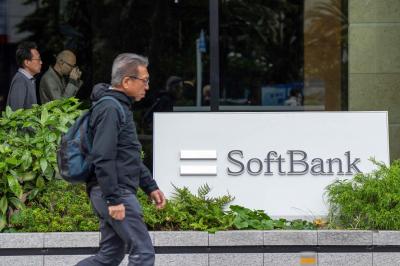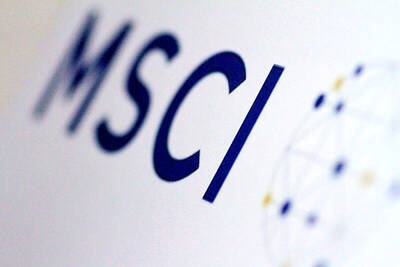AU Optronics Corp (友達光電), the nation’s second-largest LCD panel maker, yesterday said former research executives stole trade secrets from the company and supplied them to a Chinese rival in exchange for hefty rewards and employment.
The Hsinchu-based company said in a statement published on its Web site that the executives offered a Chinese rival important and advanced know-how, including information on active-matrix organic light-emitting diode (AMOLED) technology, image quality technology and technology related to a 4-Mask process for manufacturing TFT-LCDs.
“The behavior of these former executives has not only infringed on the fruits of our investments in research and development, but also seriously hurt fair competition in the industry,” AUO said in the statement.
The company did not name its former executives nor identify the Chinese company.
AUO said it had reported the issue to the Ministry of Justice’s Investigation Bureau and filed a lawsuit against the executives in question with the Hsinchu District Court.
“The company will cooperate with the investigation and provide all necessary assistance to prosecutors and investigators,” AUO said in the statement.
Several local media, including the state-owned Central News Agency (CNA), said the AUO officials involved were a person surnamed Lien (連), who worked at the company’s display business unit, and Wang (王), who worked at the organic light-emitting diode (OLED) division.
The reports, citing sources from the Investigation Bureau, also named the Chinese company involved as China Star Optoelectronics Technology Co (華星光電), China’s No. 2 flat-screen panel maker and a member of the leading TV maker TCL Group.
The rise of Chinese TV panel makers, such as China Star Optoelectronics and its bigger peer BOE Technology Group Co (京東方), have gradually become a threat to Taiwanese and South Korean businesses thanks to the massive Chinese TV market and support from the Chinese government, David Hsieh (謝勤益), vice president of NPD DisplaySearch for the Greater China market, said in August.
The local media’s reports said the two executives joined the Chinese company in September last year, after they resigned from AUO.
Citing sources from the Investigation Bureau, the reports said Lien was serving as a vice president of TCL’s industrial research institute on a three-year US$2.5 million contract, while Wang was working at China Star Optoelectronics’ AMOLED business division, with an annual salary of NT$5 million (US$170,000).
According to the reports, investigators conducted a nine-month probe of the case and searched the two executives’ houses on Sept. 26, when they returned to Taiwan for the Mid-Autumn Festival.
Following questioning of the two, prosecutors have not issued arrest warrants, but have barred the two individuals from leaving the country pending further investigation, the reports said.
Under the National Technology Protection Law (國家科技保護法), flat-panel technology is one of the nation’s most sensitive technologies, which could have a significant impact on Taiwan’s national security and technological competitiveness if exported without government approval.

PERSISTENT RUMORS: Nvidia’s CEO said the firm is not in talks to sell AI chips to China, but he would welcome a change in US policy barring the activity Nvidia Corp CEO Jensen Huang (黃仁勳) said his company is not in discussions to sell its Blackwell artificial intelligence (AI) chips to Chinese firms, waving off speculation it is trying to engineer a return to the world’s largest semiconductor market. Huang, who arrived in Taiwan yesterday ahead of meetings with longtime partner Taiwan Semiconductor Manufacturing Co (TSMC, 台積電), took the opportunity to clarify recent comments about the US-China AI race. The Nvidia head caused a stir in an interview this week with the Financial Times, in which he was quoted as saying “China will win” the AI race. Huang yesterday said

Japanese technology giant Softbank Group Corp said Tuesday it has sold its stake in Nvidia Corp, raising US$5.8 billion to pour into other investments. It also reported its profit nearly tripled in the first half of this fiscal year from a year earlier. Tokyo-based Softbank said it sold the stake in Silicon Vally-based Nvidia last month, a move that reflects its shift in focus to OpenAI, owner of the artificial intelligence (AI) chatbot ChatGPT. Softbank reported its profit in the April-to-September period soared to about 2.5 trillion yen (about US$13 billion). Its sales for the six month period rose 7.7 percent year-on-year

Nissan Motor Co has agreed to sell its global headquarters in Yokohama for ¥97 billion (US$630 million) to a group sponsored by Taiwanese autoparts maker Minth Group (敏實集團), as the struggling automaker seeks to shore up its financial position. The acquisition is led by a special purchase company managed by KJR Management Ltd, a Japanese real-estate unit of private equity giant KKR & Co, people familiar with the matter said. KJR said it would act as asset manager together with Mizuho Real Estate Management Co. Nissan is undergoing a broad cost-cutting campaign by eliminating jobs and shuttering plants as it grapples

MORE WEIGHT: The national weighting was raised in one index while holding steady in two others, while several companies rose or fell in prominence MSCI Inc, a global index provider, has raised Taiwan’s weighting in one of its major indices and left the country’s weighting unchanged in two other indices after a regular index review. In a statement released on Thursday, MSCI said it has upgraded Taiwan’s weighting in the MSCI All-Country World Index by 0.02 percentage points to 2.25 percent, while maintaining the weighting in the MSCI Emerging Markets Index, the most closely watched by foreign institutional investors, at 20.46 percent. Additionally, the index provider has left Taiwan’s weighting in the MSCI All-Country Asia ex-Japan Index unchanged at 23.15 percent. The latest index adjustments are to